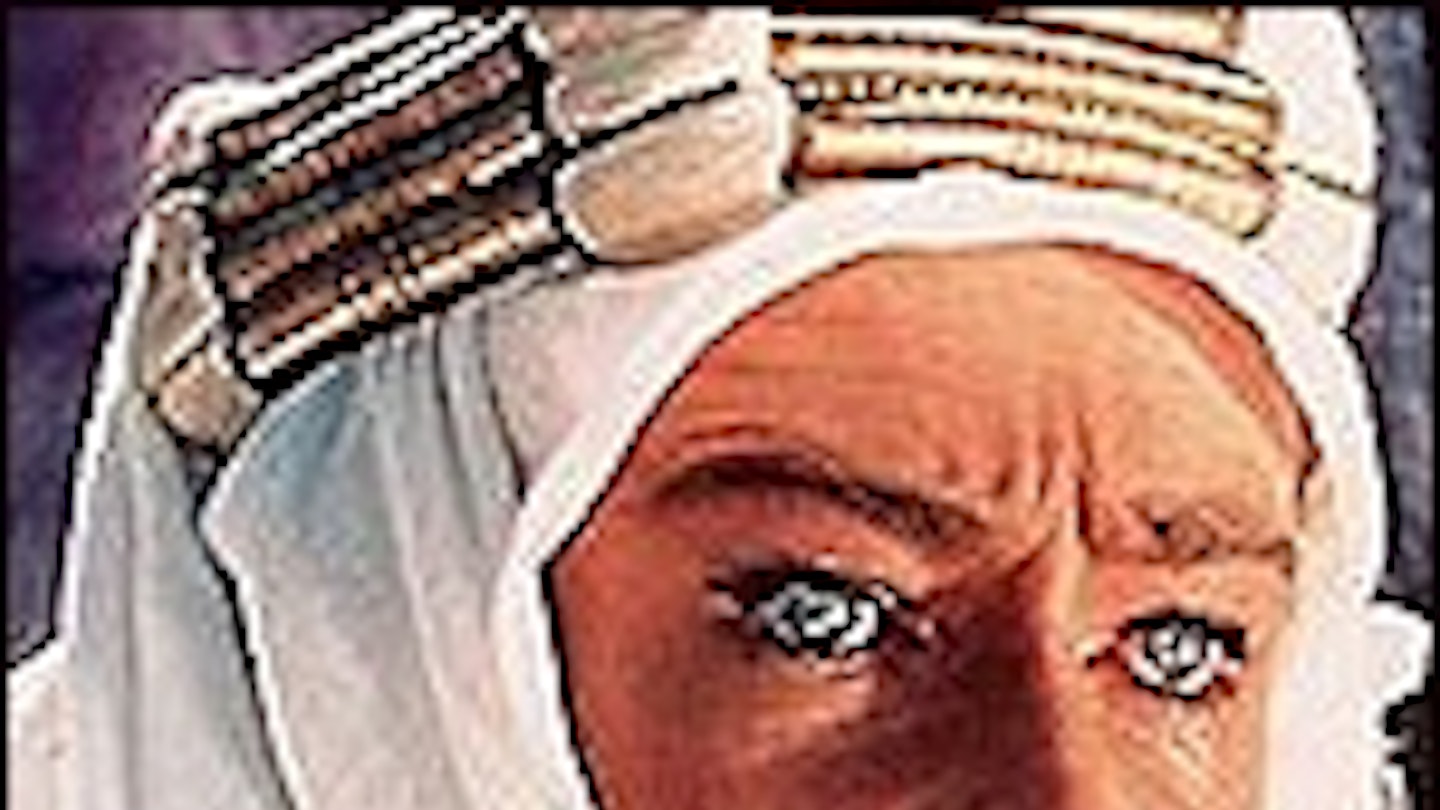David Lean's mythic blockbuster is both a stunning epic and a sensitive portrait of one of the greatest romantic legends of the 20th Century, "poet, scholar, warrior, exhibitionist" T.E. Lawrence. Although the film opens on Lawrence's death, it eschews, "the life" for its defining moment in history, the young Lawrence's role in the Arabian desert revolt of 1916-18 — as exaggerated by himself in Seven Pillars Of Wisdom, adapted by Robert Bolt and the uncredited Michael Wilson.
Lawrence's triumph — seven Oscars for Picture, Director, Cinematography, Score, Sound, Editing and Art Direction — and its enduring appeal are down to a combination of exhilarating, exotic adventure and an intensely personal, human story. Lawrence's tormented psyche and the political-cultural turmoil of the time and place are picked out against a spectacular, vast and timeless backdrop and absolutely thrilling action artistry. With several rival productions foiled over the years (including a mooted film version of Terence Rattigan's stage play in which Alec Guinness starred), two years of laborious preparation were followed by 14 dust-choked months of location shooting from May of 1961 in Jordan, Spain and Morocco.
This was longer than it took the real Lawrence, from lieutenant to colonel, to see the desert tribes unite under Prince Faisal and tip the balance for the Allies against the Turks in World War I. Guinness, too old for Lawrence by the time Lean got the go, played Faisal. Producer Sam Spiegel's choice for Lawrence was Marlon Brando. After Brando dropped out, 24-year-old Albert Finney (whose Lawrence screen tests in Arab costume are the most requested viewing item in Britain's National Film Archive) got the nod but said no, he didn't want to become a matinee idol just yet.
Lean happened to catch a caper called The Day They Robbed The Bank Of England and suddenly 28-year-old Peter O'Toole, the right age and with the same Irish heritage as Lawrence (though a good few inches taller than the diminutive T.E.), was on his gruelling way to glory on the back of a camel. When the film premiered Noel Coward famously quipped that if O'Toole had been any prettier the film would have had to be called Florence Of Arabia. He is pretty indeed, and the arresting image of his pale blue eyes staring intensely under the white headdress is iconic.
Inspired moments have the feel of classic silent film storytelling spiced with colour and sound effects of the most delicate technical invention, like the cut from Lawrence blowing out a match in Cairo to the desert. The last beat of his breath becomes a whisper over the sun rising red on the Sahara, the film poised in still purity before Maurice Jarre's sweeping musical theme swells up.
Action in Lawrence is not confined to battle sequences, railway explosions and whooping Arabs charging down sand dunes. Truly remarkable scenes empty the screen of extras and noise. In the most coolly audacious and entrancing of character introductions, cinematographer Freddie Young redefined the term "long shot" with his miraculous mirage of a quavering dark speck on the white horizon slo-o-o-wly taking shape as camel and rider, finally revealing itself as the murderously proud Ali (Sharif). They shot about nine minutes but Lean said he "lost his nerve", cutting to under three. Another lulu: a man, Gasim (I.S. Johar), has slipped off his camel and is given up for dead. "It is written." Lawrence turns back, to the fury of the men convinced it is a futile, suicidal gesture. Lean cuts between Gasim's ordeal, the sun, burning from orange to a relentless, searing white, Lawrence, riding, riding, and the hero-worshipping boy Daud, keeping vigil. An empty horizon signifies expectation. Lawrence emerges with Gasim, to be greeted with amazement. Royally hailed El Aurens, he gasps "Nothing is written" and passes out. It's eight minutes of genius.
In contrast, the taking of the Turkish stronghold of Aqaba is realized with breathtaking dispatch, most of it in one long panning shot, banners flying, horses and camels kicking up clouds of sand, surprised Turks overrun in a moment, riders pouring through white city to sapphire sea as the silent cannon, trained uselessly towards the ocean, squats above. Combat in Lawrence illustrates the concept of literate action. Imperious Faisal embodies courage, ambition and despair on horseback, wielding sword and ordering, "Stand and fight" as his encampment is bombarded from the air, refusing to acknowledge his warriors with their fabled past are helpless against modern armaments.
The "Noprisoners" bloodbath in which retreating Turks are hacked to death is practically discreet by today's " standards ", but it has not lost its power to shock because the quivering, bloodied O'Toole's Lawrence has visibly snapped and the action is pictured as chaotic and ugly. We don't need dialogue exposition to understand why and how his boyish adventure has become an inglorious, masochistic madness from which, in self-disgust he flees in search of reason and solitude, if not obscurity.
